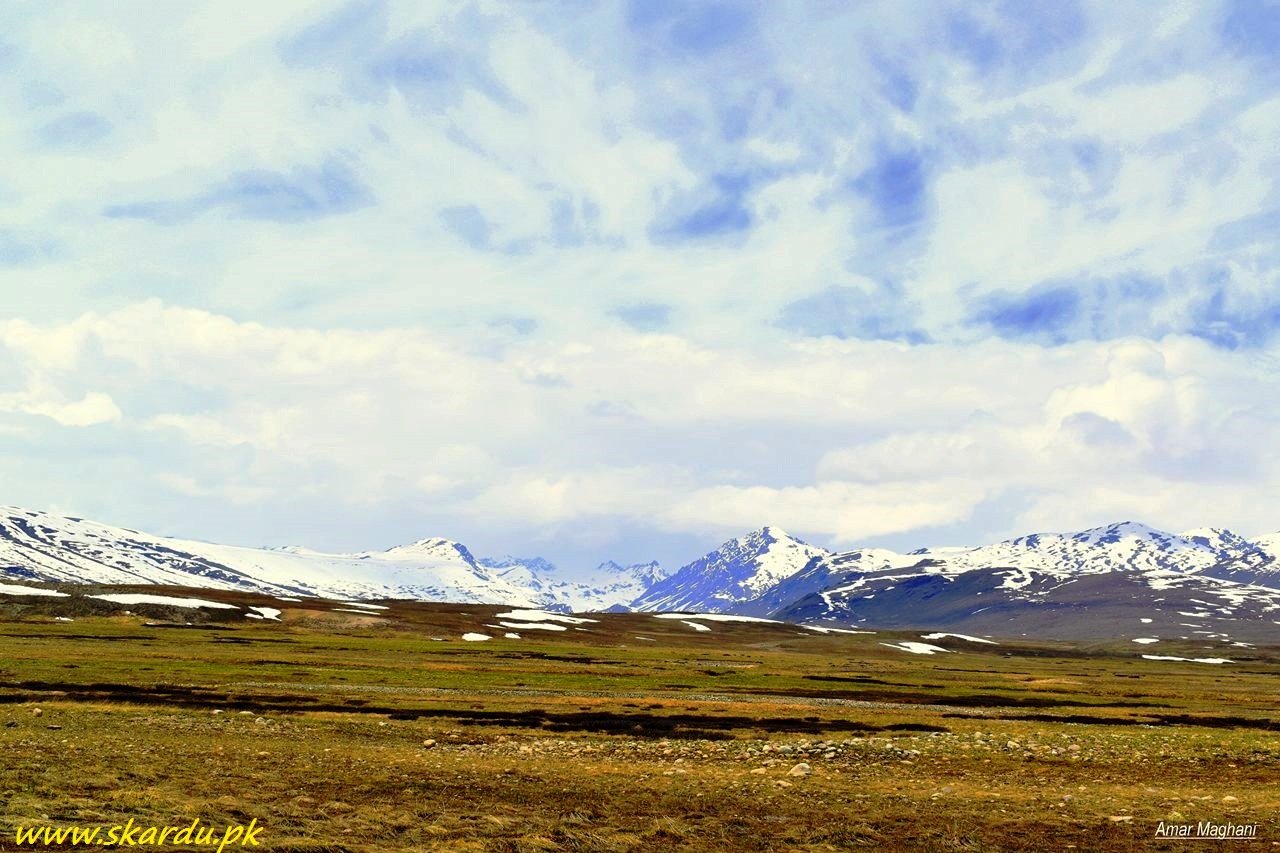Deosai National Park is a plateau located in Gilgit Baltistan. Geographically it lies in the western Himalayas. Deosai is surrounded by the valleys of Skardu, Kharmang, Astore, and Gultari. Administratively the area is divided between Skardu, Astore and the Kharmang districts of Gilgit Baltistan. The majority of which lies in Skardu District.
Why Deosai is called the land of giants?
Deosai is also called The Land of Giants because the local people believed that the plateau was inhabited by giants. Deosai is famous for its lush green meadows, and wildlife specifically Himalayan Brown Bear, musk deer, urial, ibex, Markhor and other wild animals.
Naming
Deosai is an Urdu term that originates from the combination of two words: “Deo,” meaning giant, and “Sai,” meaning shadow, hence the phrase “Shadow of the giants.” It was derived from the legendary folk tale”Saif-al-Mulook,” a poem by Mian Muhammad Baksh.
In the local Balti language, it is called Ghbiarsa which means “summer’s place” which indicates that it is only accessible in the Summer season.
Geography
Deosai is located in the western Himalayas region. The average elevation is 4114 meters above sea level. It offers a western Himalayas ecosystem. It covers an area of 3000 Sq Km. Deosai is also called the roof of the world because it is one of the highest plateaus in the world. It has a mix of plains, plateaus, hills, streams, lakes, and mountains. There are more than five lakes in Deosai. Among them, Sheosar is the largest lake. Other lakes are located in the Burgi La area.
There are three rivers which originate from Deosai which are Kala Pani, Shatung and Bara Pani. Kala Pani and Bara Pani combinely forsm the Shango Shigar river.
Deosai National Park Wildlife and Plants
The Government of Gilgit Baltistan established Deosai National Park to safeguard the Himalayan brown bear specie and their habitat in 1993. After the establishment of the park, the bear population increased from 19 in 1993 to 78 in 2022. before that, the bear was hunted by trophy hunters and local people to safeguard their domestic animals. The Himalayan Wildlife Foundation played a key role in declaring the area as a National Park and managed it for about a decade. The Northern Areas Forest Department took over the park’s management in 2006.
Deosai National Park is also home to a lot of Himalayan wildlife such as the Himalayan ibex, Snow cock, Snow Leopard, Ladakh urial, Kashmir Musk Deer, Himalayan wolf, Himalayan marmot, vulture, and a diverse range of over 124 resident and migratory bird species.
Deosai is a high altitude plateau with tropical climate. Many plant species are found in the park such as Polygonum affine, Thalictrum alpinum, Bromus oxyodon, Saxifraga flagellaris, and Androsace mucronifolia. The national park also has some medicinal plants such as Thymus linearis (Reetumburuk), Saussurea lappa (kuth), and Ephedra gerardiana (Say), which are locally renowned for their therapeutic properties.
How to reach Deosai National Park?
Deosai is accessible from June to September while in winter it is inaccessible due to heavy snowfall. If you want to visit via Skardu then, first of all, you have to travel to Skardu city. PIA operates daily flight from Islamabad to Skardu. It also operates two flight in a week from Karachi and Lahore. It takes 45 minutes to reach Skardu from Islamabad by air. If you want to travel by road then you can travel on Karakoram highway and newly renovated Jaglot Skardu Road.
From Skardu city, it takes 1 hour to reach Ali Malik top via Sadpara. On the way, you can see the beautiful crystal-clear lake of Sadpara. You can travel via Car, Jeep and other vehicles. Jeeps and four-wheelers are recommended.
Besides that, it is also accessible via Chilim, Astore Valley. After a long journey from Islamabad to Astore, you will reach Chilim. Furthermore, you have to travel via Chilim Valley. Finally, you will reach Sheosar Lake.
When to visit Deosai?
The best time to visit Deosai is from mid-June to August when Deosai is full of wildflowers. From October to May it is covered with snow. Therefore, July and August are the best months to visit Deosai.
What to do?
Deosai is now a national park therefore there are some restricted zones. The Parks and wildlife department of the Gilgit Baltistan government has divided the area into many zones. You can visit certain zones only. The core zone is a specially protected area for Brown bears and other wildlife. There are many streams and lakes. Fishing is allowed with a license. Deosai is a plateau full of wildflowers, lakes, streams, and meadows. It is no less than a paradise on earth. A night camp at Sheosar Lake will take your soul beyond this planet. At night you can enjoy a heavenly view of the milky way galaxy and trillions of stars. You will never find such a stunning place anywhere in the world.

Also Read Deosai Declared as Most Beautiful Place to visit in Gilgit Baltistan: Poll
Skardu.pk is one of the leading authentic news and information platform focusing on adventure tourism, regional and world affairs.

